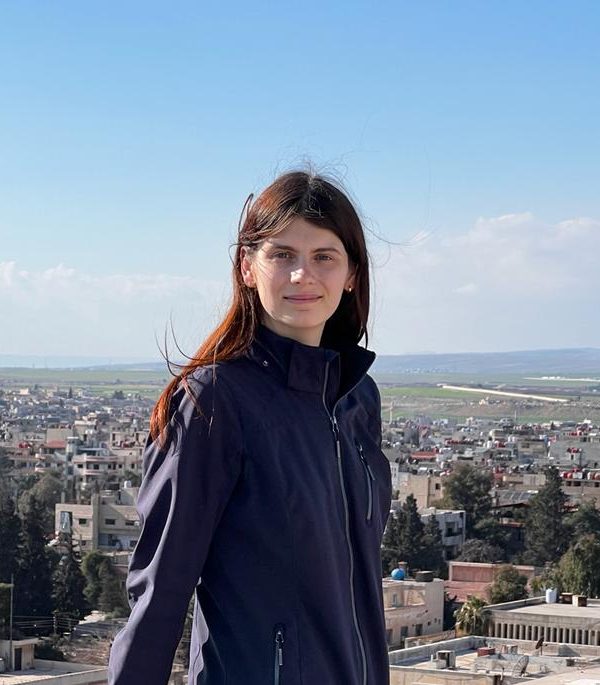
Will Women’s Participation be a Flashpoint in DAANES-Damascus Integration?
This analysis is a product of the Kurdish Peace Institute in Qamishlo, which provides decision-makers and the public with locally-rooted, actionable information on critical issues facing northeast Syria, the region, and the world.
“Let Damascus know this: we won’t let you establish Syria without women. We won’t allow laws to be made without women. We won’t allow a system without women to lead Syria.”
To raucous applause, Foza Yusuf laid a challenge before the new Syrian state. Yusuf is a member of the executive council of the Democratic Union Party (PYD), the founding party of northeast Syria’s Kurdish-led administration, and one of the region’s most powerful women leaders. In early January, she gave the opening address at a conference on the role of women in post-Baathist Syria organized by northeast Syria’s women’s institutions.
Watching from the audience, I was struck by the difference between the room I was in – a gathering of Kurdish, Arab, Syriac and Yezidi women speaking freely and assertively about war and politics – and the images of gun-toting masked men chanting Islamist slogans coming out of Damascus. These were both glimpses at the future of Syria, separated only by a few hours on the highway, but they may as well have been different worlds.
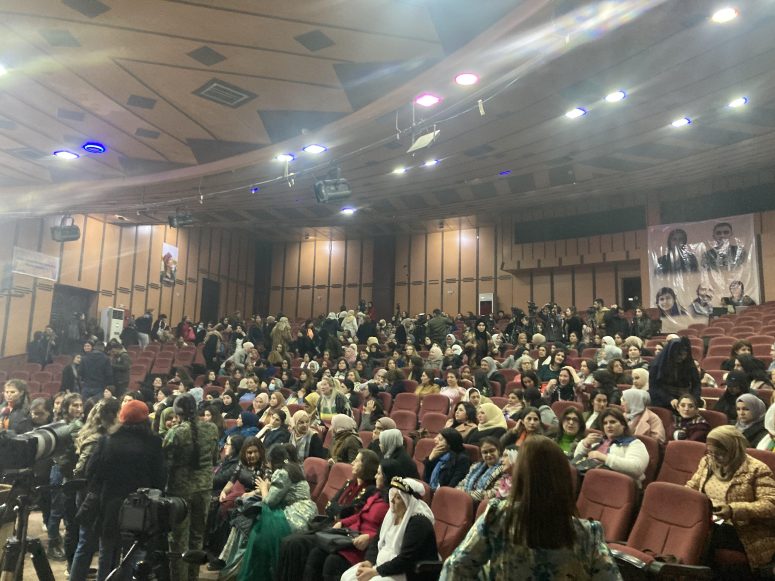
Just two months later, Syrian Democratic Forces (SDF) Commander in Chief Mazlum Abdi and Syrian transitional president Ahmed al-Sharaa struck a deal to integrate SDF and Democratic Autonomous Administration of North and East Syria (DAANES) institutions with those of the rest of the country.
Yusuf is now one of three women on a seven-member committee tasked with implementing the integration deal. She is joined by Women’s Defense Units (YPJ) General Command member Sozdar Derik and DAANES Labor and Social Affairs Authority Co-Chair Maryam Ibrahim. YPJ Commander-in-Chief Rohilat Afrin has also participated in talks with Syrian transitional authorities.
These women have spent years turning the Kurdish movement’s philosophical assertion that society can’t be free without women’s freedom into real-world laws and institutions amidst war, economic crisis, and political uncertainty. That work has not been without obstacles. Any member of any women’s structure in the region will say openly that it is far from complete.
Now, the leaders of northeast Syria’s ‘women’s revolution’ face an even greater challenge — protecting the gains that they have made in negotiations with a new Syrian government rooted in hardline Islamist politics.
So far, women’s roles, rights and status have not come up directly in integration talks. Both sides seem to have approached indirect manifestations of the issue with pragmatism. Yet some early indicators that suggest divergent views on the role of women in politics, security and public life could be a source of future conflict.
Based on interviews with women across DAANES and SDF structures, including those who are participating in talks today, this report lays out the DAANES/SDF framework for women’s participation, the practical impacts of this framework, early examples of how women’s issues have manifested and been addressed in talks, and potential sources of conflict and cooperation.
Autonomy, Self-Defense, Equal Representation: The DAANES/SDF Model
At the same January women’s conference, Kongreya Star spokeswoman Rihan Loqo defined the stakes of the ideological divergence between the DAANES and Hayat Tahrir al-Sham (HTS), the Islamist rebel group that toppled Assad and formed the core of the transitional government. “They want to take us back to the eighteenth century. But this is the 21st century, and we will make it the century of women’s freedom,” she proclaimed.
Later that month, I asked Loqo how she and her colleagues would guarantee that in negotiations. She named four priorities: “Our equal representation, our co-chair system, our women’s defense forces, and our autonomous women’s organizations are our red line. Why? Because our revolution created and organized itself with these.”
In northeast Syria, all four policies are established in institutions and law. Foza Yusuf played a leading role in the drafting of the region’s most recent Social Contract, which was adopted just a year before the Baathist regime fell. When the document was published, she told me that the rights it gave to women set it apart from other constitutions around the world.
“In many parts of the world, women’s political participation is low. But in the Autonomous Administration, women should participate at a rate of 50%. This is a major difference in terms of the democratization of a political system. Another difference is our co-chair system. Here, for the first time in the world, an equal leadership model is established in a political system and in society,” Yusuf said.
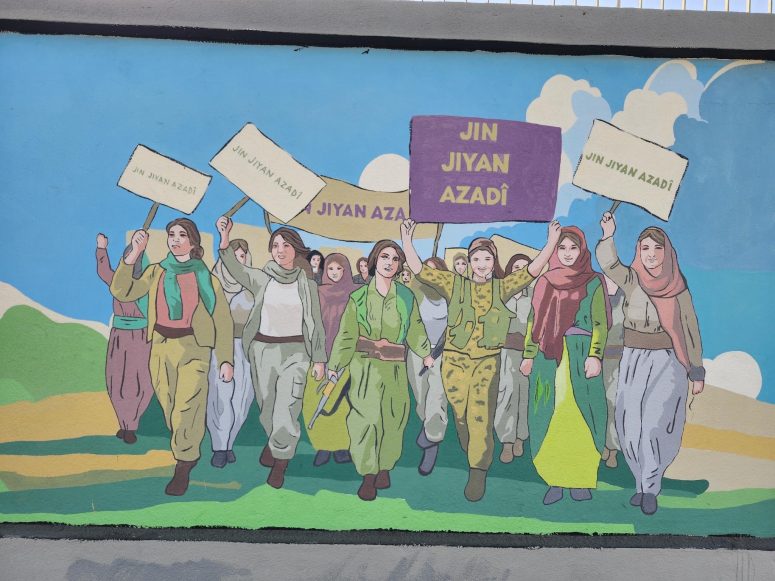
Articles 78 and 91 of the Social Contract set a quota of 50 percent for women’s representation in all DAANES deliberative bodies.
Article 24 institutionalizes the co-chair system, under which leadership positions are held jointly by one man and one woman, “in all political, social, administrative and other fields.” This means women also enjoy parity in leadership posts.
“It is included in the basic principles [of the Social Contract] that women and men are equal everywhere, that they have the same rights. At the same time, women can make decisions about their own affairs,” Yusuf continued.
This is the principle of women’s autonomy — a belief that women should have their own organized spaces and the power to make decisions on women’s issues, operationalized through an array of all-female institutions and organizations that operate parallel to their mixed-gender counterparts.
Article 51 of the Social Contract states that “women have the right to equal participation in all areas of life and to make decisions related to their affairs.” Article 110 establishes a Women’s Council tasked with “draw[ing] up policies and strategic plans related to women,” “mak[ing] decisions about women,” and “organiz[ing] laws related to women and the family and present[ing] them to the Peoples’ Democratic Council for issuance.
Article 111(C) recognizes the most famous all-women’s organization in northeast Syria — the YPJ — as an autonomous group within the SDF structure. It also grants women the right to serve in security forces.
Why It Matters: Women’s Views
Women in DAANES and SDF structures believe that these policies mutually reinforce each other to make their regionally unprecedented level of women’s participation possible. They see equal representation, co-chairing, autonomous organization, and self-defense not as outcomes of a battle won, but starting points for the struggle to change a deeply unequal society.
Self-Defense
Many women view armed self-defense as a natural response to the violence and oppression they faced even before the war began.
“In our region, the laws of states are built upon religious principles. At the level of the state, at the level of the tribe, at the level of the family, there are laws and rules that target women. Women don’t have the right to make basic decisions about their own lives,” explained Lana Hussein, a member of the YPJ Military Council, when I asked her why the right of women to participate in northeast Syria’s defense forces was so important.
“So, women here need self-defense like they need bread and water.”
Berivan Mihemed, a YPJ commander responsible for Deir Ezzor, concurred. “In the face of war, social restrictions, and male violence, self-defense is a necessity. Women have no choice but to defend themselves,” she emphasized.
Battlefield successes may have also helped take down barriers to equal political participation.
“Before the revolution, women were seen as small, incapable. We as the YPJ destroyed that perception. We proved that women could protect themselves, that they could fight on the front lines without fear, that they could lead this war. Our society began to believe that women were capable,” Mihemed continued.
In Kobane, the most conservative Syrian Kurdish region, the YPJ’s heroism in battles against ISIS won global admiration. It also appears to have fostered the kind of practical political change for women that Mihemed described.
Berivan Hesen, a Kurdish politician from Kobane, said the YPJ’s struggle helped her pioneer the co-chair system in a rural, traditional local context.
Hesen was elected vice-president of Kobane Canton when the region declared autonomy in 2014. She held that office through the ISIS siege of the city, crossing to the Turkish side of the border to organize her displaced constituents. In 2016, she became Kobane Canton co-president.
“Just like our enemies said Kobane would fall, some of our friends said co-chairing wouldn’t work,” Hesen told me with a smile when I met her at her office in Raqqa. “There were many hardships. Women who are oppressed in their homes don’t speak up at work. They see silence as normal. Men often think individualistically, but the co-chair system is collective.”
Hesen indicated that the YPJ’s success helped women co-chairs surpass these obstacles. “My co-chair once said to me, ‘I have special respect for women after what the YPJ did here.’ No one can see the YPJ and say ‘women can’t do this or that.’ Women can do anything.”
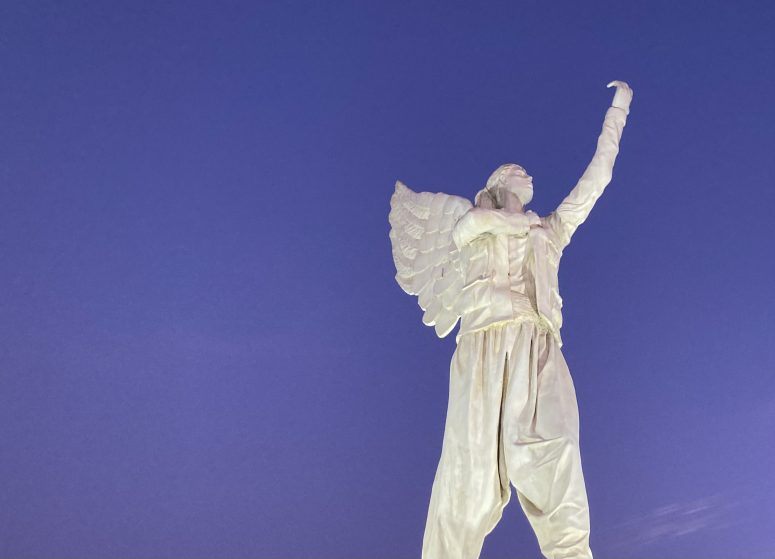
While no such research has yet been done in northeast Syria, studies of Kurdish communities in southeastern Turkey back up Hesen’s anecdote. In Anatomy of a Civil War, academic Mehmet Gurses found that “the very sight of women as fighters serves as a serious challenge to deeply ingrained attitudes regarding traditional gender roles and responsibilities,” with the men he interviewed noting “female fighters’ prowess in explaining their changed views of the opposite gender.”
Women’s Autonomy
Autonomous women’s organizations ensure that there is always a part of the system with a mandate to represent women. “If we didn’t have our autonomy, our rights would be ignored. No one would give us any rights if we didn’t organize ourselves to get them,” said Rihan Loqo.
“Everyone asks what YPJ is going to do now that the war is over. They understand self-defense as just taking up arms and going to war. But our understanding is that we fight to win rights for women, to light their path towards a democratic future, to ensure they bow down to no one,” said Lana Hussein.
When fighting for a place in public life in a male-dominated society, women can’t afford to be weak. “Women must improve themselves,” said Berivan Hesen. “We can’t just be present. We can’t think we’ve developed enough just because we’re in the room. I always say – fine, you’ve won your right to be a co-chair. How are you going to protect it? You have to fight twenty-four hours a day to keep these achievements.”
Autonomy also gives women a space to gain skills and confidence where men cannot intervene — and women can’t fall back on male authority. In mixed-gender DAANES and SDF structures, for example, women are advised not to criticize other women in front of men. They are supposed to save their critiques of each other for all-women’s spaces.
“Without autonomy, we wouldn’t be talking about a free woman’s personality. Where does that personality come from? From self-organization,” Rihan Loqo continued. “Look, without women’s organizations, I wouldn’t be talking to you right now. I couldn’t be a leader.”
Finally, autonomous women’s organizations create a defined opening for women even in the most male-dominated fields. For many women, taking an unconventional career path is easier if they know they will be surrounded by other women when they do it. “Before, the system would say that women couldn’t do diplomacy, they couldn’t do politics, they couldn’t fight. For everything that they said we couldn’t do, we established women’s organizations in those areas, and now women lead everywhere,” Loqo explained.
Equal Representation and the Co-Chair System
Equal representation and the co-chair system ensure that women have a meaningful seat at every table where decisions are made. While there are men in northeast Syria who defend the women’s movement and women there who have little interest in it, the institutionalization of its policies in the first place would have been far less likely if women didn’t have the power and presence to fight for them.
My research suggests that co-chairing specifically may have benefits for the political system as a whole. In a survey of women co-chairs conducted last year, I found that the most common answer respondents gave when asked about the goal of the model was not women’s equality or empowerment (though they found that important) but “participatory, collaborative, or anti-individualist leadership.”
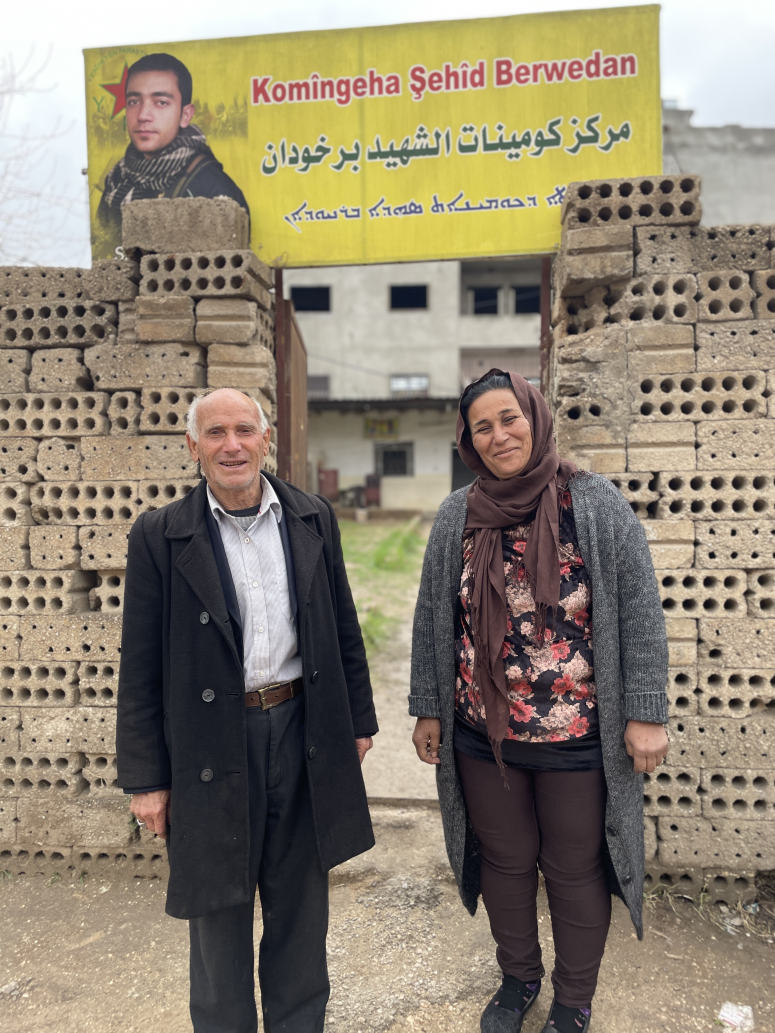
One respondent who gave this answer, a Kurdish woman who co-chaired a local political party council, outlined a connection between these objectives. She defined the goal of the co-chair system as “to avoid individual decisions, to break the male mentality [of] ‘men only,’ [for] gender equality in all domains and at all levels, and create a shared life where men and women are equal.”
Asked how she believes the co-chair system does this, she wrote: “With mutual respect, self-confidence, exchanging points of view, and not marginalizing the other, we can achieve the main goal of the co-chair system. For example, at any event, both [co-chairs] are responsible. They should agree on decisions that lead to the success of the event.”
Her response aligns with a growing body of literature that suggests a correlation between women’s representation in politics and democratization. As Syria transitions away from an autocratic past, all local political innovations that promote collaborative or democratic thinking are valuable.
Integration in Practice
It is still too soon to determine the extent to which the women of northeast Syria will keep their achievements. But the presence of high-ranking women who represent these policies and structures at the negotiating table is a positive first indicator. It shows that the DAANES is making women’s participation a priority and that Damascus is willing to accept female leaders as serious interlocutors.
That acceptance is a positive evolution from Hayat Tahrir al-Sham and Al-Nusra practices. These groups would not have publicly met with women, let alone unveiled, secular Kurdish women representing powerful political and military institutions. Meeting with women leaders as equal interlocutors in a peace process shows that, whatever their personal views may be, transitional government decision-makers recognize that these women hold power and status in the northeast.
Women on the DAANES delegations have highlighted this in interviews. Asked by Al Monitor about her view on negotiating with “ideological opposites,” Foza Yusuf said: “Regardless of their backgrounds, what matters is what people think and what people do in the present. Syria is our common country, and it is our joint duty to make Syria democratic and free. Negotiations are a form of struggle. The peoples of Syria deserve an honorable and free future. Our job is to secure this goal.”
Maryam Ibrahim told Hawar News that the lack of discussions on women’s rights in talks so far shouldn’t cause concern. “Women’s participation in the DAANES delegation in and of itself is a message that naturally puts the issue on the table. It is known that the DAANES, from the beginning, has established a system of cooperation between men and women with policies like the co-chair system,” she affirmed.
The transitional government has also given public roles to a handful of elite women. This, too, is a change from HTS and Al-Nusra practices. Currently, there is one female minister in the 23-member cabinet. In northeast Syria, the co-chair system gives women an automatic 50% of all cabinet-level posts. Women in the DAANES and SDF also critique what they believe is the government’s relegation of women to less powerful posts.
“When this government came to power, it put a few women forward. It said ‘here is a woman responsible for women’s and family affairs, here’s a woman responsible for social issues, here’s a woman responsible for children’s issues, OK?’ They sent women back to their old roles, to the time when women only looked after children, prepared food, or did handicrafts, when if they were involved in a war, they cooked or worked as nurses. We don’t accept these limits. Not as an armed force, not as an administration, and not with our philosophy of women’s freedom,” the YPJ’s Lana Hussein said. Her critique echoes a recent World Economic Forum study, which warns that women in national governments worldwide “are setting policy agendas for gender equality, family and children affairs, and social inclusion and development, but are largely missing at the helm of defence, justice and home affairs, and economic policy-making areas.”
In Sheikh Maqsoud, the DAANES-administered Kurdish neighborhood of Aleppo that was provisionally integrated with the transitional government administration of the city through an April agreement, women see mixed signals.
According to a Kurdish municipality official, the transitional government opposes the maintenance of the co-chair system in the long term. Damascus has made it clear that it is opposed to quota systems in general. Proponents argue that this will promote advancement based on merit; detractors fear it is intended to justify the exclusion of ethnic and religious minorities and women.
As of now, until a final deal is made, DAANES institutions in Sheikh Maqsoud will keep their structure. In June, the local Kongreya Star branch organized a conference on the importance of the co-chair system, likely as a message to transitional authorities. 400 people, including co-chairs of komîns, councils, political parties, and the Internal Security Forces (ISF), took part in the conference.
Female members of the ISF continue to serve on internal checkpoints. Alif Muhammed, the female co-chair of ISF forces in Sheikh Maqsoud, assessed security cooperation with the transitional government and the agreement as a whole positively in an April interview with North Press Agency. There are no women present on the checkpoints shared with transitional government security forces that surround the neighborhood. One female ISF member told Medya News in April that it was “important” for women to take their place there. “This will change. We will educate them indirectly and then they will accept it,” she said.
Challenges Ahead
Few academic studies or historical cases shed light on what happens when a government that styles itself as the fruit of a ‘women’s revolution’ merges with one whose leaders once fought for a caliphate. It’s possible that Syria’s peace process is in uncharted territory — in addition to reconciling ethnic, religious and political divides, it will have to reconcile two vastly different views on the role of women in politics, security, and public life.
Any deal that restricts the policies the DAANES has used to guarantee women’s participation in public life will be difficult for the DAANES to sell to its core constituents. The region’s leaders are accountable to a politicized base that sees women’s freedom as one of several pillars of the revolution they support. For integration to work, Damascus needs the DAANES and SDF to be able to bring its population “on side.” Concessions on women’s issues, like concessions on Kurdish rights or religious freedom, will disrupt their ability to do this.
The practical dismissal of women from local government or security forces could cause protest or unrest, given the number of women who stand to lose and their experience with organization and mobilization. Women’s organizations like Kongreya Star existed well before 2011 and were able to successfully organize women under the regime, suggesting that they will be able to operate even in a scenario where there is a restoration of central state control without decentralization.
Any rollback of the DAANES/SDF model of women’s participation could also be seen as an attack on Kurdish identity and culture, exacerbating ethnic tensions and threatening efforts to unify the country. Syrian Kurds are proud of the fact women in their community participate in politics and security forces at a higher level than women in most countries in the region do. The YPJ, in particular, is seen as a national institution that shed blood to protect Kurdish communities.
A scenario wherein a Syrian state dominated by Sunni Arab Islamists demands that minority women disempower themselves will have echoes of ISIS and Al-Nusra violence, even if that is not the transitional government’s intent. The ‘Jin, Jiyan, Azadi’ uprising in Iran shows that gender-based violence and repression against Kurdish women can spark mobilization of entire Kurdish communities.
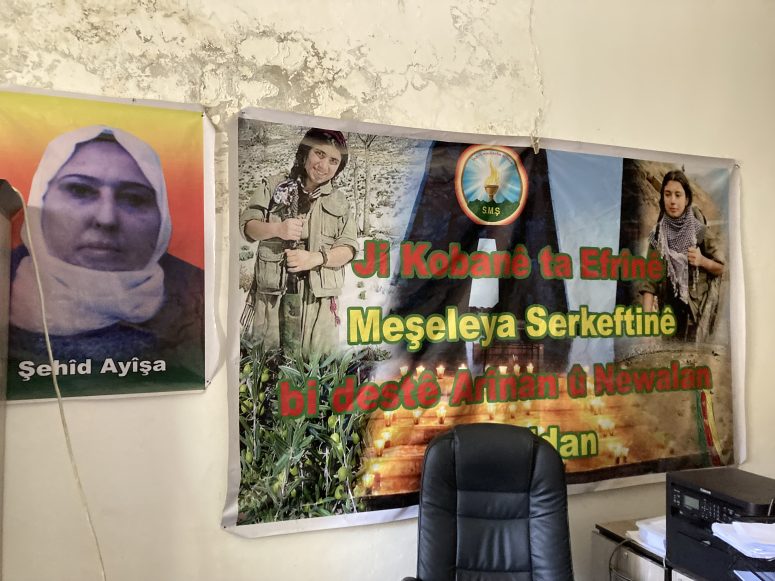
These tensions will be magnified if militants infamous for abuses against Kurdish women remain in senior Syrian army posts. Syrian 86th Division commander Ahmad Ihsan al-Hayes (Hatem Abu Shaqra) was implicated in abuses including the murder of beloved Kurdish politician Hevrin Khalaf as leader of Turkey-backed Syrian National Army (SNA) faction Ahrar al-Sharqiyah. Sayf Boulad Abu Bakr, now commander of Syria’s 76th Division, was implicated in torture, kidnapping, and sexual abuse of Kurdish civilians as commander of the SNA’s Hamza Division in Afrin. It will be difficult to convince Syrian Kurdish women to hand over weapons and political institutions to a state that promotes their persecutors.
None of these potential issues are inevitable at this stage. Engagement between transitional government and DAANES/SDF leaders over the course of negotiations could shift transitional government attitudes towards women over time. Geographic and political divisions have left many Syrians without accurate information about governance and society in other parts of their country. The new state may have biased or incorrect information about the role that women play in DAANES and SDF structures. Some of its leaders, as a consequence of political careers spent in Islamist militant organizations, may never have worked with women as equal interlocutors before. Through meeting and working with the DAANES’ mixed delegation, the transitional government could update its perceptions and, thus, the policies it is willing to accept.
(Header photo: North and East Syria Communications on X (@nes_comm)).


